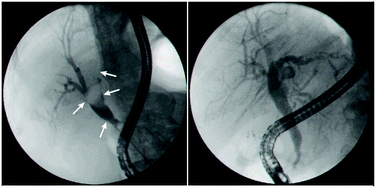*
Corresponding authors
a
Department of Internal Medicine I, Paracelsus Medical University/Salzburger Landeskliniken (SALK), Muellner Hauptstrasse 48, 5020 Salzburg, Austria
E-mail:
f.berr@salk.at
Fax: +43 662 4482 881
Tel: +43 662 4482 2800
b
Institute of Pathology, Paracelsus Medical University/Salzburger Landeskliniken (SALK), Salzburg, Austria
c
Department of Internal Medicine IV, Gastroenterology and Hepatology, Medical University of Vienna, Vienna, Austria
d
Clinic for Interdisciplinary Endoscopy, University Hospital, Hamburg-Eppendorf, Hamburg-Eppendorf, Hamburg, Germany
e
I. Department of Medicine, University Medical Center Hamburg-Eppendorf, Martinistraße 52, Hamburg, Germany
f
Department of General and Visceral Surgery, Paracelsus Medical University/Salzburger Landeskliniken (SALK), Salzburg, Austria
g
Department of General and Visceral Surgery, Krankenhaus Barmherzige Schwestern Linz, Austria


 Please wait while we load your content...
Please wait while we load your content...